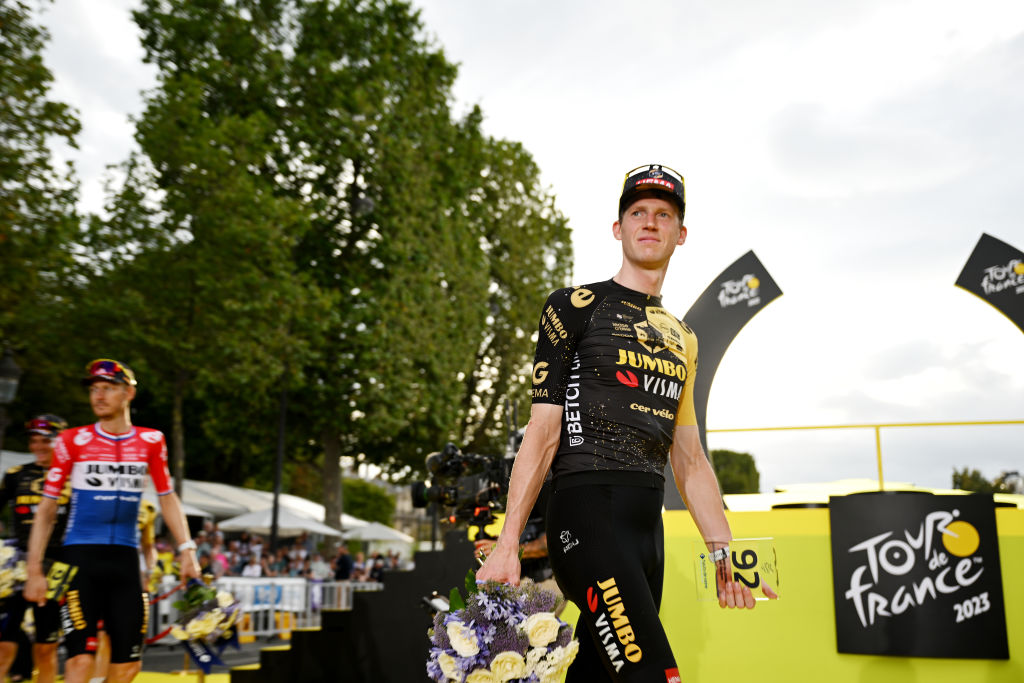'Maybe I trained too hard?' - Van Hooydonck still baffled by heart condition
Retired Belgian racer searches for reason behind heart condition that sparked car crash

Nathan Van Hooydonck has said he remains uncertain as to what lies behind the heart condition that led to his losing consciousness while driving a car earlier this autumn.
The 28-year-old was at the wheel of his car, driving his pregnant wife to the gynaecologist in northern Belgium when the accident happened. Various vehicles were involved and while nobody was seriously injured, the Jumbo-Visma rider was rushed to hospital amidst initial fears for his life.
Those fears thankfully rapidly dissipated, but the Belgian was placed in an induced coma for several hours and he later learned his career as a cyclist was over.
Van Hooydonck remains very thankful that he was lucky enough that both a police station was in the vicinity of the accident, as well as various off-duty health workers, meaning help was quickly at hand for all. But the Tour de France racer still remains uncertain why he has an enlarged heart ventricle, as doctors discovered after the accident, and which caused the Belgian team worker's heart to fail, albeit briefly, at such a critical moment.
Nathan Van Hooydonck: 'I knew immediately my career was over'
Colbrelli sends message of support to Van Hooydonck: 'I understand your pain'
Jumbo-Visma confirm Van Hooydonck's 'health situation is not critical' after car accident
Nathan Van Hooydonck in 'hopeful' condition after collapsing while driving
Speaking to Dutch news outlet NOS, Van Hooydonck explained that as a result of the enlarged ventricle, “A cardiac arrhythmia has developed. When I had a checkup by the team in December there was nothing wrong. They cannot explain how it could develop in eight months."
Van Hooydonck asked rhetorically if “Maybe I trained too hard? I have always asked a lot of myself. But I don't think that is the reason.”
Looking at other potential causes, Van Hooydonck reflected that after COVID-19, already intense race finales began earlier than previously, also that “We sometimes race in very difficult [weather] conditions. Forty degrees [Celsius] and we just keep riding on. That's not healthy."
The latest race content, interviews, features, reviews and expert buying guides, direct to your inbox!
These may be potential factors, but a real explanation has yet to emerge, and "It is worth investigating thoroughly," Van Hooydonck said. "I would like to know, especially for my teammates and other people who participate in top sports."
Concerning heart failure, "They [the doctors] know it can happen if you do this or that,” he added. But as for what caused it - “It is currently a mystery.”
The Belgian has been fitted with an internal defibrillator (ICD) to correct potential future cardiac arrhythmia and while no longer able to race, he has accepted that for safety reasons, there is no other option.
"If something happens to me in a peloton at a hectic moment and I fall, it is immediately a dangerous situation for riders around me,” he told NOS.
“If you fall when playing football, it’s only you that falls. In cycling, you cannot control those kinds of circumstances.”
While the subsequent birth of his child, Alessio, has helped him and his family resettle into a very different lifestyle following his enforced retirement, Van Hooydonck added that he was very lucky the crash happened in the place where it did.
"All the people who had to be there to keep me alive were there. One went to get an AED” - that checks the heart’s rhythm - “someone else carried out the chest compressions and someone else provided mouth-to-mouth resuscitation," he said.
"If one of those three health workers had taken the day off that day, things could have turned out very differently."
Alasdair Fotheringham has been reporting on cycling since 1991. He has covered every Tour de France since 1992 bar one, as well as numerous other bike races of all shapes and sizes, ranging from the Olympic Games in 2008 to the now sadly defunct Subida a Urkiola hill climb in Spain. As well as working for Cyclingnews, he has also written for The Independent, The Guardian, ProCycling, The Express and Reuters.
